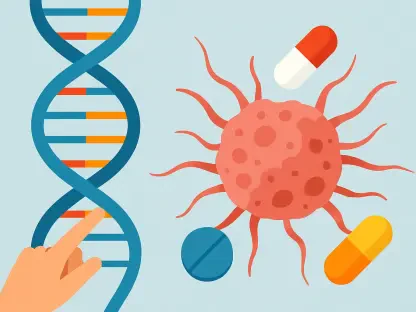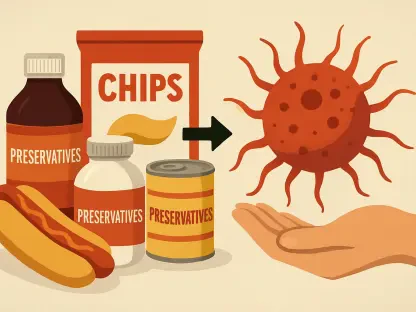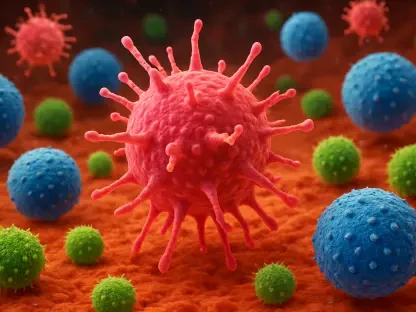In today’s discussion, we have the pleasure of speaking with Ivan Kairatov, a seasoned Biopharma expert known for his profound insights into the tech and innovation driving the pharmaceutical industry. With extensive experience in research and development, Ivan is here to share his knowledge about mantle cell lymphoma and the promising treatment advances in this area, especially with the new recommendations for Brukinsa.
Can you explain what mantle cell lymphoma (MCL) is and why it is considered an aggressive form of non-Hodgkin lymphoma?
Mantle cell lymphoma is indeed a rare subtype of non-Hodgkin lymphoma that originates from B cells, a type of white blood cell integral to our immune system. MCL is characterized by rapid progression, often resulting in aggressive disease behavior. This aggression is partly due to the genetic aberrations seen in MCL cells, which drive their unchecked growth and spread. Patients with MCL face significant challenges because, unlike some other lymphomas, MCL tends to be more resistant to conventional therapies and often relapses quickly.
How does Brukinsa work to treat MCL, and what makes it different from other treatments available?
Brukinsa, scientifically known as zanubrutinib, operates by inhibiting Bruton’s tyrosine kinase (BTK), an enzyme that plays a pivotal role in the signaling pathways these lymphoma cells employ to proliferate. By blocking BTK, Brukinsa effectively impedes the growth and survival of MCL cells. What distinguishes Brukinsa is its targeted approach, offering a therapy that’s not only potent but specifically tailored to the molecular irregularities found in MCL. This action differs from general chemotherapy and provides a more directed form of attack against the cancer cells while aiming to minimize harm to healthy cells.
What is the significance of the National Institute for Health and Care Excellence (NICE) recommending Brukinsa for use on the NHS in England and Wales?
The recommendation by NICE is a monumental milestone for patients and healthcare providers. It signifies a recognized need for innovative treatments to tackle relapsed or refractory MCL, aligning with evidence from clinical studies that demonstrate Brukinsa’s effectiveness. NICE’s endorsement ensures that patients in England and Wales have access to Brukinsa through the NHS, potentially improving their prognoses and quality of life. This can foster greater accessibility and affordability of cutting-edge treatments that were previously less available.
Could you elaborate on the criteria for patients who are eligible to receive Brukinsa as a treatment option?
Brukinsa is targeted at adults who’ve experienced relapsed or refractory MCL after at least one prior treatment line. This implies the drug is especially intended for individuals who haven’t succeeded with initial therapies or whose disease has returned after previously responding to treatment. These criteria help in identifying patients who might gain the most benefit from this focused therapy, often enabling a personalized approach to managing their condition effectively.
You mentioned Brukinsa is aimed at patients with relapsed or refractory MCL. Can you explain what “relapsed” and “refractory” mean in this context?
In lymphoma treatment, “relapsed” refers to the cancer returning after initially responding well to treatment. “Refractory” describes a situation where the lymphoma does not respond or ceases to respond to therapy. Both conditions present daunting challenges as they indicate that traditional treatment approaches may not be sufficient. Thus, Brukinsa’s approval marks a potential lifeline for those facing these difficult circumstances, offering hope of disease stabilization or improvement.
How many people in the UK are affected by MCL annually, and what are the challenges they face with current treatments?
Around 600 individuals in the UK are affected by MCL each year. These patients often face the complexities of a rapidly advancing disease that can quickly overwhelm existing therapies. Current treatments may offer temporary remission, leading to the harsh reality of frequent relapses. The need for more durable and effective solutions is critical to improving patients’ life expectancy and minimizing symptoms, and innovative drugs like Brukinsa perhaps represent a new hope in this arduous battle.
What were the key findings of the phase 2 BGB-3111-206 study regarding Brukinsa’s effectiveness in treating MCL?
The phase 2 BGB-3111-206 study revealed an impressive overall response rate (ORR) of 83.7%, with patients experiencing a median duration of response (DoR) of 19.5 months. These findings underscore Brukinsa’s considerable efficacy in reducing the disease burden and prolonging the disease-free period for those affected. Such compelling data offer a promising outlook for Brukinsa’s incorporation into treatment regimes as it demonstrates both high response rates and sustained efficacy over time.
In addition to the phase 2 study, what evidence was provided from the phase 1/2 BGB-3111-AU-003 trial to support NICE’s recommendation?
The phase 1/2 BGB-3111-AU-003 trial supported Brukinsa’s effectiveness with an ORR of 84.4% and a median DoR of 18.5 months. This robust evidence was essential to NICE’s decision, highlighting Brukinsa’s capacity to deliver consistent and substantial therapeutic benefits. Such data reinforce the notion that Brukinsa not only initiates a rapid response in patients but sustains clinical benefits, contributing significantly to its proposed role within MCL treatment plans.
How did Brukinsa perform in various patient subgroups, such as those with refractory disease or high-risk scores on the MCL International Prognostic Index?
Remarkably, Brukinsa showed favorable outcomes across diverse patient subgroups, including those with refractory disease or elevated risk scores as per the MCL International Prognostic Index. Its effectiveness in these challenging cases reflects its potential to notably improve clinical outcomes in patients who might otherwise have limited options. By offering efficacious intervention even in high-risk scenarios, Brukinsa demonstrates its versatility and promise in personalized cancer therapy.
Are there any notable side effects of Brukinsa mentioned in these studies?
While the studies affirm Brukinsa’s well-tolerated profile, it’s important to acknowledge potential side effects, as with any pharmacologic intervention. Patients may experience issues such as minor hematologic abnormalities or symptoms related to the digestive system. Nevertheless, the severity and frequency of these side effects appear manageable, especially considering the substantial therapeutic gains Brukinsa provides. Continuous monitoring and supportive care play essential roles in ensuring patient safety throughout treatment.
Robert Mulrooney mentioned Brukinsa is approved in over 75 markets and treated more than 200,000 patients globally. What is the drug’s global impact on treating B-cell malignancies?
Brukinsa’s wide approval and usage across numerous countries reflect its comprehensive impact on the treatment of B-cell malignancies. Successfully reaching over 200,000 patients underscores its international acceptance as a viable and transformative option in cancer care. On a global scale, Brukinsa has contributed to significant breakthroughs in personalized medicine, offering new hope to patients and healthcare systems striving to conquer complex lymphoma cases.
What role do healthcare professionals and the patient community play in ensuring timely access to innovative therapies like Brukinsa?
Healthcare professionals are pivotal in advocating for and implementing advanced treatments like Brukinsa. Their clinical judgment and patient-centered approaches drive the adoption of new therapies within healthcare systems. Meanwhile, the patient community plays an essential role by voicing their needs and experiences, which in turn informs policy and access decisions. Together, both groups are instrumental in navigating the path towards timely and equitable access to revolutionary treatments.
What are the next steps for Brukinsa’s approval for use in Scotland by the Scottish Medicines Consortium?
The Scottish Medicines Consortium’s review process for Brukinsa is ongoing, focusing on its suitability for Scottish patients battling MCL. Upcoming steps will likely involve further scrutiny of clinical data, patient impact assessments, and economic evaluations to determine Brukinsa’s place in Scotland’s healthcare offerings. The consortium’s deliberations will be crucial in extending access to this promising drug, ensuring that Scottish patients can equally benefit from its therapeutic potential.
How does the involvement of organizations like NICE and the Scottish Medicines Consortium benefit patients with B-cell malignancies in the UK?
Organizations like NICE and the Scottish Medicines Consortium are vital in navigating the complexities of healthcare access and treatment innovation. Their assessments not only certify clinical efficacy but also ensure treatments are economically viable within national healthcare systems. This involvement fosters a paradigm where patients with B-cell malignancies receive cutting-edge therapies in a timely manner, safeguarding patient interests and advancing standards of care across the UK.
How does BeOne Medicines plan to continue its work with NICE and other healthcare institutions to address the evolving needs of patients with B-cell malignancies?
BeOne Medicines is committed to ongoing collaboration with NICE and other healthcare bodies to continuously address patient needs. By prioritizing research, community engagement, and transparent communication with regulatory authorities, BeOne aims to remain responsive to advancements in medical science and patient expectations. Their strategic partnerships and dedication to innovation are critical in adapting to the dynamic healthcare landscape, ensuring patients benefit from the latest therapeutic breakthroughs.
Do you have any advice for our readers?
For those navigating the complexities of cancer treatment—whether patients, caregivers, or professionals—my advice would be to stay informed and proactive. Engage with healthcare professionals and seek out the most recent information on treatment options and innovations. Every breakthrough, such as Brukinsa, is a reminder of the importance of advancing knowledge and advocacy in the journey towards improved health outcomes.









